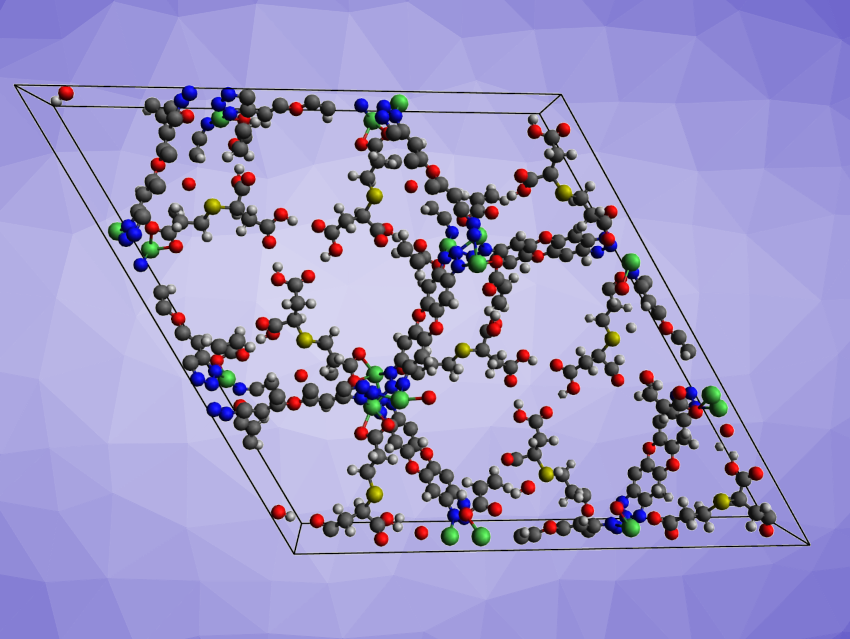Hydrogen could be a promising alternative to fossil fuels. However, developing safe and efficient hydrogen storage options is challenging. Storing it indirectly in the form of ammonia could be one option to circumvent this issue. This would require ammonia storage materials with high capacities and energy-efficient regeneration options.
Metal–organic frameworks (MOFs) could be promising as ammonia storage materials with high gravimetric ammonia capacities, but they generally require high regeneration temperatures and have insufficient volumetric ammonia capacities for practical application.
Jung-Hoon Lee, Korea Institute of Science and Technology (KIST), Seoul, Republic of Korea, Chang Seop Hong, Korea University, Seoul, and colleagues have used postsynthetic modifications to prepare robust MOFS with high gravimetric and volumetric ammonia capacities (example pictured). The team started from the mesoporous MOF Ni2Cl2BTDD (BTDD = bis(1H-1,2,3,-triazolo [4,5-b],-[4′,5′-i]) dibenzo[1,4]dioxin). They exchanged chlorides in this MOF with acrylates to install double bonds, which were further functionalized via a photocatalytic ene–thiol click reaction with mercaptocarboxylic acids, e.g., thiomalic acid (TMA).
The modified MOFs show significantly improved gravimetric and volumetric ammonia capacities. This is due to the high density of carboxylic groups. The MOF functionalized with TMA shows an unprecedentedly high ammonia storage density (0.39 g cm–3) and a high gravimetric ammonia capacity (23.5 mmol g–1 at 298 K and 1 bar). The MOF allows easy regeneration at fairly low desorption temperatures, which could make it suitable for ammonia storage applications.
- High Gravimetric and Volumetric Ammonia Capacities in Robust Metal–Organic Frameworks Prepared via Double Postsynthetic Modification,
Dae Won Kim, Dong Won Kang, Minjung Kang, Doo San Choi, Hongryeol Yun, Sun Young Kim, Su Min Lee, Jung-Hoon Lee, Chang Seop Hong,
J. Am. Chem. Soc. 2022.
https://doi.org/10.1021/jacs.2c01117



